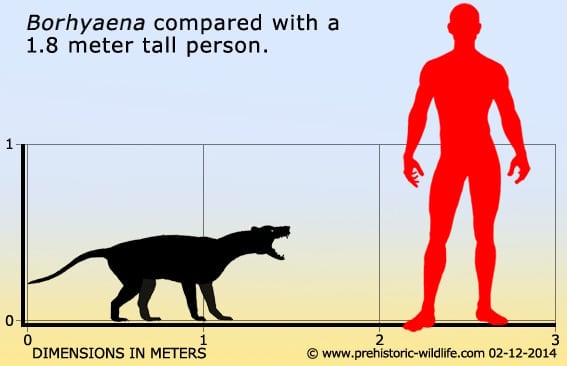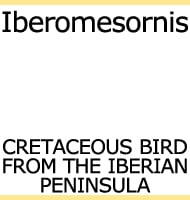In Depth
Despite the name, Borhyaena was in no way related to hyenas, but was instead one of the larger predatory marsupials that roamed South America during the early/mid Miocene periods. As the type genus of the Borhyaenidae, Borhyaena represents one of the main kinds of predators active in South America until they were ultimately replaced by new predators such as the sabre-toothed Thylacosmilus and larger phorusrhacid terror birds like Phorusrhacos and Brontornis.
Although sometimes described as bear like, this description is more down to the presumed heavy build of the animal. However many remains are incomplete which means that palaeontologists are limited to conducting a best guess by comparing individuals to more complete remains of other animals. A more reasonable guide is the length of Borhyaena which is estimated at up to one and a half meters long, something that has led to it being described as being wolf-sized.
Borhyaena is usually depicted as being a cursorial (ground dwelling) predator that relied more upon ambush hunting in attacking prey. This behaviour has been inferred from study of the proportionately short legs that would have provided for excellent acceleration to top running speed. However many of the potential prey animals such as litoptern mammals like Theosodon had long legs, and once they got going it would have been almost impossible for Borhyaena to catch up. Aside from using ambush tactics, Borhyaena may have shown a preference towards hunting smaller litoptern like Diadiaphorus, which would have had less chance to escape a charging Borhyaena than larger relatives.
Further Reading
– Evolution of the Borhyaenidae, extinct South American predaceous marsupials. – University of California Publications in Geological Sciences 117:1-89. – L. G. Marshall – 1978. – Functional adaptations of the postcranial skeleton of two Miocene borhyaenoids (Mammalia, Metatheria), Borhyaena and Prothylacinus, from South America. – Palaeontology. 46 (6): 1213–1267. – C. Argot – 2003.










